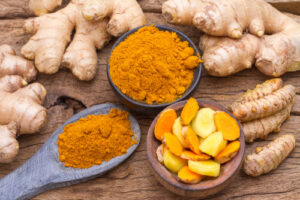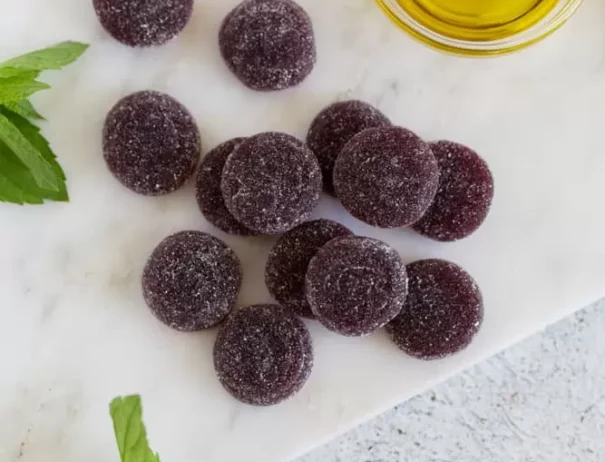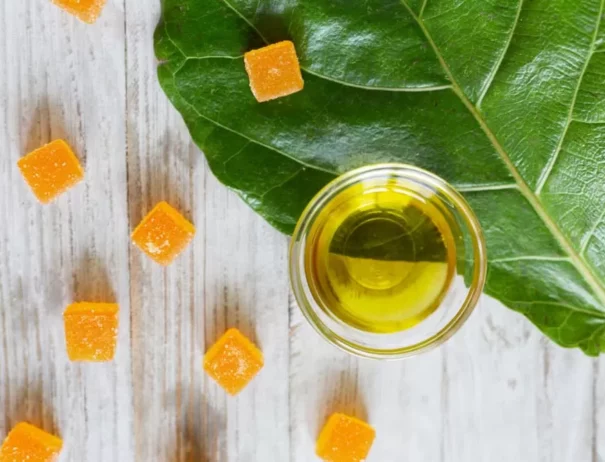4 Keto Hacks For Infusions
What do you want to accomplish this year? Maybe you’re looking to change your diet in a big way, or perhaps you want to improve your general wellbeing step by step. Today we’re here to help you conquer those goals the best way we know how: by using flower, of course!
Flower and wellness, of course, go together like PB&J (but with far less calories). One area where the two intersect is the keto diet. The keto diet is designed to keep the body in a state of ketosis. Ketosis is the process by which the body breaks down stored fat. The keto diet does so through a high fat, moderate protein, and very low carbohydrate based diet. It can also confer many health benefits such as reduced blood sugar levels and lower blood pressure.
Flower is a fat soluble molecule, which means it jives real well with the keto diet and LEVO. To celebrate the new year we came up with a list of LĒVO-friendly keto hacks. Check them out below.
1. Tailor Fat To Function
There are many different fats you can incorporate into a keto diet. Since each type of fat has its own unique health benefits, we suggest optimizing each type of fat based on intended function.
MCT oil, for instance, has been shown to lead to a greater loss of weight4 when consumed as compared to olive oil.
Flower consumers, surprisingly enough, actually tend to weigh less than their non-consuming counterparts5. While more research is needed, preliminary studies suggest that select cannabinoids such as THCV may also confer weight loss properties7. You can tailor your MCT oil for this purpose by infusing THCV-rich strains such as Durban Poison into MCT oil.
MCT oil has also been shown to retain terpenes better than olive oil7, which may provide more “potent” therapeutic effects.
Avocado oil, on the other hand, contains a different kind of fat. It’s high in unsaturated fat and contains high levels of HDL3, otherwise known as the “good” kind of cholesterol. Anyone seeking to improve their heart health , then, might opt to infuse avocado oil instead.
2. Pair With Flavors And Spices That Activate Endocannabinoid Systems
The endocannabinoid system (ECS) is a system of chemical messengers and receptors that regulate various functions within the body. The goal of the ECS is to maintain balance, otherwise known as homeostasis. Cannabinoids feel so good because they can bind to our ECS receptors, triggering therapeutic effects.

Curcumin is an anti-inflammatory spice popular in Asia that’s been used for thousands of years8. Its binding to CB1 receptors has been known to produce an antidepressant effect9. In fact researchers in 2012 noted that treating subjects with curcumin resulted in increased endocannabinoid production.
Black pepper contains high levels of the terpene beta-caryophyllene. Beta-caryophyllene binds directly to CB2 receptors10 (it’s the only terpene that does so!) which modulates metabolic tissue activity and immune function.
Peek at this infographic for a list of health benefits associated with each terpene. This will help you get a better sense of what spices to look for.
3. Optimize Further With Terpenes
Add foods and other ingredients that are terpene-rich to your infusions to strengthen their effects even further. Why is that? Terpenes have their own unique therapeutic effects11 and are believed to work synergistically with other cannabinoids. This synergy is called “the Entourage Effect12.”

- Mangoes (high in Myrcene)
- Apples (Farnesene)
- Lemons/lime/oranges (Limonene)
- Rosemary, basil, dill (Pinene)
Be sure to use dried ingredients/spices so as to not introduce extra water into your oil solution.
4. Play With Other Cannabinoids
One of our favorite ways to use the LEVO is to experiment with different cannabinoids.
Many advocates of the keto diet, for instance, recommend optimizing gut health. The non-intoxicating cannabinoid Cannabigerol (CBG) has been shown to exert therapeutic effects for conditions such as Inflammatory Bowel Disease (IBS). You can ramp up your favorite keto oils, then, by adding a little CBG into the process. Insert dried CBG flower into the chamber during the infusion process to reap those extra cannabinoids.
Other ways you can play include using a mix of THC and CBD flower in the chamber or adding powdered isolate to your final oil.
Do you have any keto flower hacks you’d like to share? Tell us all about it in the comments.
Sources:
- Campos, Marcelo. “Ketogenic Diet: Is the Ultimate Low-Carb Diet Good for You?” Harvard Health Blog, 27 Apr. 2020, www.health.harvard.edu/blog/ketogenic-diet-is-the-ultimate-low-carb-diet-good-for-you-2017072712089.
- Masood, Wajeed. “Ketogenic Diet.” StatPearls [Internet]., U.S. National Library of Medicine, 22 June 2020, www.ncbi.nlm.nih.gov/books/NBK499830/.
- Gunnars, Kris. “10 Health Benefits of Low-Carb and Ketogenic Diets.” Healthline, Healthline Media, 20 Nov. 2018, www.healthline.com/nutrition/10-benefits-of-low-carb-ketogenic-diets.
- St-Onge, Marie-Pierre, and Aubrey Bosarge. “Weight-Loss Diet That Includes Consumption of Medium-Chain Triacylglycerol Oil Leads to a Greater Rate of Weight and Fat Mass Loss than Does Olive Oil.” The American Journal of Clinical Nutrition, U.S. National Library of Medicine, Mar. 2008, www.ncbi.nlm.nih.gov/pmc/articles/PMC2874190/.
- B;, Le Strat Y;Le Foll. “Obesity and C—-bis Use: Results from 2 Representative National Surveys.” American Journal of Epidemiology, U.S. National Library of Medicine, pubmed.ncbi.nlm.nih.gov/21868374/.
- S. Anavi-Goffer, G. Baillie, et al. “Δ9-Tetrahydrocannabivarin (T-CV): a Commentary on Potential Therapeutic Benefit for the Management of Obesity and Diabetes.” Journal of C—-bis Research, BioMed Central, 1 Jan. 1970, jc—-bisresearch.biomedcentral.com/articles/10.1186/s42238-020-0016-7.
- Ramella, Alberto, et al. “Impact of Lipid Sources on Quality Traits of Medical C—-bis-Based Oil Preparations.” Molecules (Basel, Switzerland), MDPI, 30 June 2020, www.ncbi.nlm.nih.gov/pmc/articles/PMC7412533/.
- Prasad, Sahdeo. “Turmeric, the Golden Spice.” Herbal Medicine: Biomolecular and Clinical Aspects. 2nd Edition., U.S. National Library of Medicine, 1 Jan. 1970, www.ncbi.nlm.nih.gov/books/NBK92752/.
- SA. Riolo, TA. Nguyen, et al. “The CB 1 Receptor-Mediated Endocannabinoid Signaling and NGF: The Novel Targets of Curcumin.” Neurochemical Research, Springer US, 1 Jan. 1970, link.springer.com/article/10.1007/s11064-012-0716-2.
- Gertsch J;Leonti M;Raduner S;Racz I;Chen JZ;Xie XQ;Altmann KH;Karsak M;Zimmer A; “Beta-Caryophyllene Is a Dietary Cannabinoid.” Proceedings of the National Academy of Sciences of the United States of America, U.S. National Library of Medicine, pubmed.ncbi.nlm.nih.gov/18574142/.
- Cox-Georgian, Destinney, et al. “Therapeutic and Medicinal Uses of Terpenes.” Edited by Nirmal Joshee et al., Medicinal Plants: From Farm to Pharmacy, U.S. National Library of Medicine, 12 Nov. 2019, www.ncbi.nlm.nih.gov/pmc/articles/PMC7120914/.
- Russo, Ethan B. “The Case for the Entourage Effect and Conventional Breeding of Clinical C—-bis: No ‘Strain,” No Gain.” Frontiers in Plant Science, Frontiers Media S.A., 9 Jan. 2019, www.ncbi.nlm.nih.gov/pmc/articles/PMC6334252/.
- Borrelli F;Fasolino I;Romano B;Capasso R;Maiello F;Coppola D;Orlando P;Battista G;Pagano E;Di Marzo V;Izzo AA; “Beneficial Effect of the Non-Psychotropic Plant Cannabinoid Cannabigerol on Experimental Inflammatory Bowel Disease.” Biochemical Pharmacology, U.S. National Library of Medicine, pubmed.ncbi.nlm.nih.gov/23415610/.

Get Your Free eBook!
Download our FREE resource, The Ultimate Edibles Guidebook, full of recipes, infusion tips and everything you need to make your first batch of edibles today!



